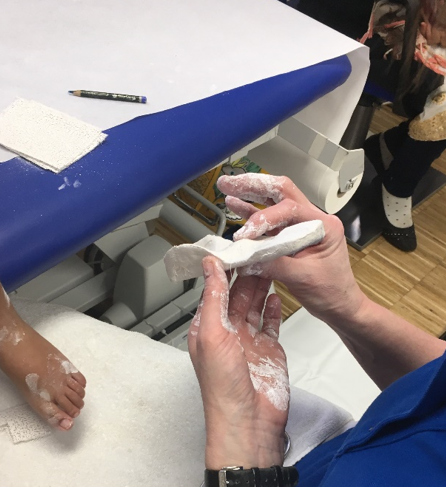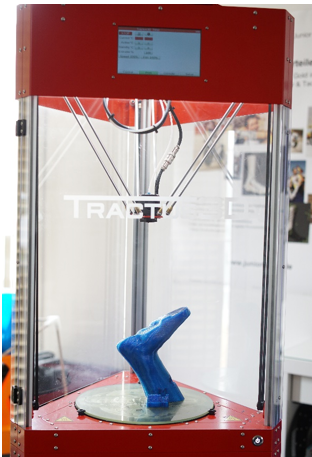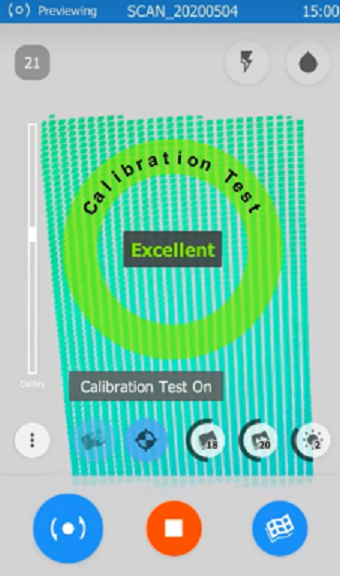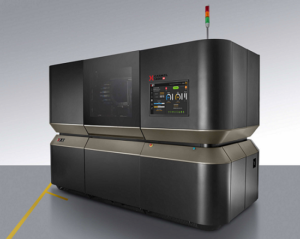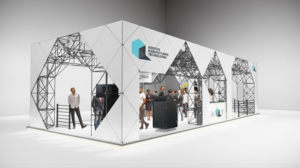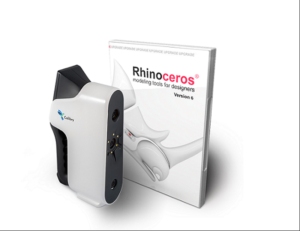In a recent case study released by Moscow-headquartered Thor3D, we see how their Calibry 3D scanner made a huge difference in the production of foot orthotics for children in Germany. Phoenix GmbH & Co., an engineering company specializing in product development with 3D printing technology, was tasked with improving the creation of orthotics for a German clinic.
Employing Calibry Nest software, the Calibry 3D scanner, Geomagic Wrap software with algorithms created by Phoenix, and the Tractus 3D printer, Phoenix was able to develop a new and reproducible solution. Able to save doctors up to 40 percent in production time, the new process is so easy it can be used by orthopedists with no previous experience in wielding 3D tools.
“Before Calibry, we had to use more expensive, less user-friendly scanners to do the same tasks. This is a limiting factor in B2B scanning applications, where the user is no scanning expert,” comments Emil Wörgötter, Application Engineer 3D Scanning & Additive Manufacturing.
Even more important is the new level of comfort afforded to young patients. Historically, being fitted for a prosthetic or an orthotic could be a long and painful process for anyone, but especially a child who needs constant updates. 3D printing has already proven itself in countless instances regarding hand and arm prosthetics—helping amputees—as well as offering a much better way to fit kids for orthotics too.
Some of the greatest advantages of 3D printing are on display in this latest case study, as children are able to enjoy completely customized medical devices that can be re-sized in a matter of minutes rather than hours. They may ultimately be able to walk more comfortably (and perhaps even look forward to their visit to see the orthopedist). This is in stark comparison to the old-fashioned and highly inefficient method of creating orthotics, beginning with taking measurements and modeling the footbed. Afterward, plaster is used to mold the orthotic—this is not only messy but can be difficult when testing the patience of a child. An orthopedic specialist is required to perform the work, which can be extremely high maintenance; in fact, if one step goes awry, the entire uncomfortable process may have to be repeated all over again. Ultimately, however, the positive form is created.
In using the Calibry 3D scanner to create an orthotic, the Phoenix team still required a positive form from a previous fitting:
“For now, in orthosis production a traditional process of creating the initial positive form has to remain. The scan of a positive form differs from foot scan,” states the Phoenix team in the case study. “A 3D scan has a lot of anatomical details of an existing foot which needs treatment, whereas a positive form has simplified and anatomically correct geometry. Currently Phoenix develops algorithms, which will automate the creation of the initial positive form too. So, in the future orthosis production will become completely contactless.”
After measuring the foot and then scanning the patient’s positive form, they were able to 3D print a new one and then create a new shell with vacuum thermoforming. The patient experienced no discomfort or long wait times, and no storage is required for the forms as all of the data remains online.
Orthotics are expected to continue to evolve further via 3D printing as they are a smaller item that is easy to produce and can be made much more quickly and affordably now, with amazing customizations.
[Source: Thor3D; Images courtesy of Phoenix GmbH & Co.]
The post 3D Printed Orthotics for Kids Reduce Production Times by 40 Percent appeared first on 3DPrint.com | The Voice of 3D Printing / Additive Manufacturing.

